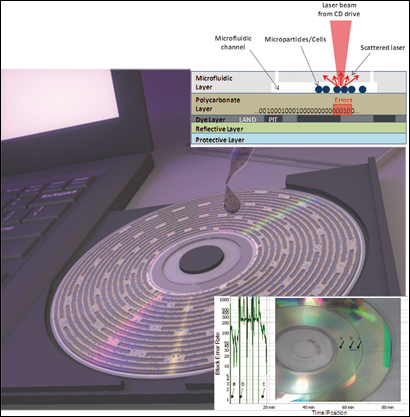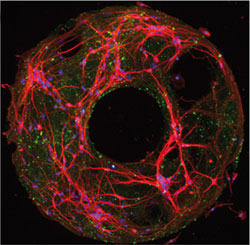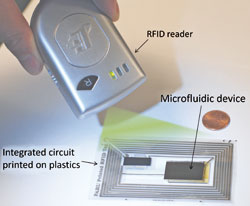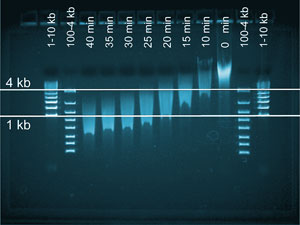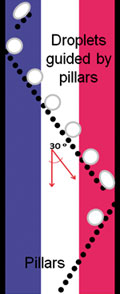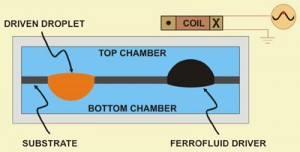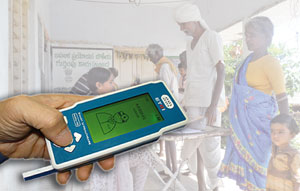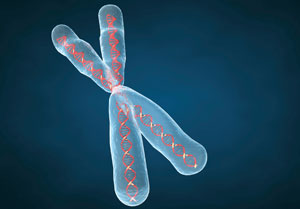
Chromosomes were extracted by washing cell extracts with a protein digester in a microfluidic trap
Danish scientists have used a micro device to isolate centimetre-long portions of human DNA to help study the genetic make-up of diseased cells.
Rodolphe Marie at the Technical University of Denmark, Kongens Lyngby, and colleagues made the device to isolate chromosomes from cell extract samples and manipulate them in such a way that the strands remain intact.
Being able to sequence DNA accurately is a challenge, but Marie’s technique allows the DNA to remain intact so that the gene sequence can be read in one go. The device is made from silicon and consists of an isolation zone in which cell samples are trapped and washed to obtain chromosomes.
Read Catherine Bacon’s Chemistry World article online here or go straight to the HOT Lab on a Chip paper:
A device for extraction, manipulation and stretching of DNA from single human chromosomes
Kristian H. Rasmussen, Rodolphe Marie, Jacob M. Lange, Winnie E. Svendsen, Anders Kristensen and Kalim U. Mir
Lab Chip, 2011, Advance Article
DOI: 10.1039/c0lc00603c











